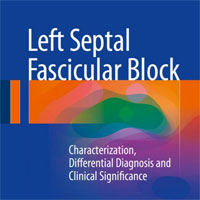Tag: diagnosis
Eosinophilic Esophagitis
Once considered a rare condition, eosinophilic esophagitis is now one of the most common conditions diagnosed during the assessment of feeding problems in children and during the evaluation of dysphagia and food impaction... read more
Electrical Storm and Incessant Ventricular Tachycardia
Electrical storm, also referred to as arrhythmic storm, refers to multiple recurrences of ventricular arrhythmias over a short period of time. In most instances, the arrhythmia is ventricular tachycardia (VT), but polymorphic... read more
POCUS Diagnosis of Medial Plantar Artery Pseudoaneurysm Secondary to Penetrating Injury
Pseudoaneurysms of the foot are rare and can occur from a range of etiologies, including laceration from a foreign body. The majority of reported cases have been diagnosed by computed tomography, magnetic resonance imaging,... read more
Reducing the Global Sepsis Burden: A Positive Legacy for the COVID-19 Pandemic?
ESICM, SCCM, and the GSA published a consensus paper in Intensive Care Medicine, emphasising the importance of recognising that patients critically ill with COVID-19 have viral sepsis, despite some differences from sepsis... read more
Point-of-Care Transcranial Doppler by Intensivists
In the unconscious patient, there is a diagnostic void between the neurologic physical exam, and more invasive, costly and potentially harmful investigations. Transcranial color-coded sonography and two-dimensional transcranial... read more
How I Went from Pulmonary Diagnostics and Wellness to System Lung Coordinator
Main Line Health is a multi-hospital health system serving patients in Philadelphia, PA, and its western suburbs. The system has been recognized as among the best in the region by U.S. News & World Report. In 2017, it was... read more
Higher Level of Mobilization Improves Health Status
In critically ill survivors, achieving higher levels of mobilization, but not increasing the number of active mobilization sessions, improved health status 6 months after ICU admission. The dosage of mobilization in ICU... read more
Tox and Hound – Metal Hydrides
We are left with four main scenarios in which arsine gas is produced and/or encountered: aqueous solutions of oxidized arsenic compounds in contact with metals metal arsenides in contact with water/moisture release... read more
Precision Medicine in ARDS
Acute respiratory distress syndrome (ARDS) is a devastating critical illness that can be triggered by a wide range of insults and remains associated with a high mortality of around 40%. The search for targeted treatment for... read more
A Retrospective Cohort Study of 12,306 Pediatric COVID-19 Patients in the United States
Children and adolescents account for ~ 13% of total COVID-19 cases in the United States. However, little is known about the nature of the illness in children. The reopening of schools underlines the importance of understanding... read more
Safety of Arterial Catheterization Using the Distal Radial Approach in ICU Management
Distal radial approach (DRA) may be a safe option for insertion of a new A-line in the ICU. The study included 20 patients with a median age of 70 (interquartile range (IQR): 58.5–77) years: 10 patients with traumas,... read more
Low Technology, Mild Controlled Hypothermia for Necrotizing Enterocolitis Treatment
Low technology, mild controlled hypothermia was feasible, not related to adverse effects, and effective treatment for NEC Modified Bell's Stage II/III. It avoided surgery, bowel perforation, and extensive intestinal resection;... read more
Cerebral Venous Sinus Thrombosis With Thrombocytopenia After Johnson & Johnson Vaccination
The initial 12 US cases of Cerebral Venous Sinus (CVST) with thrombocytopenia after Ad26.COV2.S (Janssen/Johnson & Johnson) vaccination represent serious events. This case series may inform clinical guidance as Ad26.COV2.S... read more
Host Endothelial, Epithelial and Inflammatory Response in ICU COVID-19 Patients
These studies demonstrate that, unlike other well-studied causes of critical illness, endothelial dysfunction may not be characteristic of severe COVID-19 early after ICU admission. Pathways resulting in elaboration of acute... read more
Guidelines on Myocardial Infarction, Novel Therapeutic Targets in Post-infarction Remodelling
This Focus Issue on ischaemic heart disease contains the ‘2020 ESC Guidelines for the management of acute coronary syndromes in patients presenting without persistent ST-segment elevation: The Task Force for the management... read more
Contrast-enhanced Imaging in the Emergency Department
We continue with the topic of Contrast-enhanced imaging in the emergency department. "What is the creatinine?" asks the radiologist when an emergency contrast-enhanced computed tomography (CT) is requested for a patient with... read more
Increase in PI during PLR detects a positive response of the PLR test
An increase in perfusion index (PI) during passive leg raising (PLR) by 9% accurately detects a positive response of the PLR test. Three patients were excluded because the plethysmography signal was absent and 3 other... read more
Left Septal Fascicular Block
This book provides clinical and electrovectorcardiographic evidence of the existence of left septal fascicular blocks and demonstrates the clinical importance of these blocks in the clinical scenario of acute coronary syndrome.... read more

Could a Glass of Wine Diagnose Long COVID?
Acute COVID-19 infection ranges from no symptoms (asymptomatic) to life-threatening. What about long COVID (the symptoms occurring more than three weeks after infection, also known as post-acute COVID syndrome)? Could... read more
FDA Authorizes Adaptive Biotechnologies T-Detect COVID Test
U.S. Food and Drug Administration issued an emergency use authorization (EUA) for the T-Detect COVID Test developed by Adaptive Biotechnologies. The T-Detect COVID Test is a next generation sequencing based (NGS) test... read more
Antiviral Drugs in Hospitalised COVID-19 Patients
These remdesivir, hydroxychloroquine, lopinavir, and interferon regimens had little or no effect on hospitalized patients with Covid-19, as indicated by overall mortality, initiation of ventilation, and duration of hospital... read more
Point-of-Care Ultrasound (POCUS) and COVID-19
COVID-19 is a disease caused by infection with SARS-CoV-2, a virus that affects multiple organ systems with numerous disease manifestations. COVID-19 has a specific tropism for the lower respiratory tract, and the most common... read more









